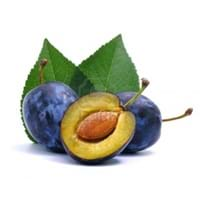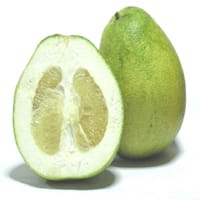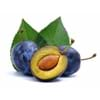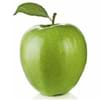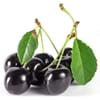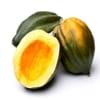Health Benefits
Cancer prevention, Cures gastro-intestinal troubles, Heart care, Increase in haemoglobin, Prevents high blood pressure
Cancer prevention, Heart care, Prevents Urinary Tract Infection
General Benefits
Anti-inflammatory properties, Boosts immune system, Digestive aid, Eye care, Flu treatment, Helps in weight loss, Maintains healthy cholesterol level, Treatment of common cold
Digestive aid, Fights against infections, Flu treatment, Healing of wounds, Helps in weight loss, Treatment of common cold
Skin Benefits
Anti-aging benefits, Brightens and lightens complexion, Reduces wrinkles, Skin revitalization, Treatment of dark spots
Anti-aging benefits, Brightens and lightens complexion
Hair Benefits
Prevents hair loss, Promotes longer and healthier hair, Protects hair, Remedy for split ends, Treatment of dandruff
Promotes longer and healthier hair, Protects hair
Allergy Symptoms
Abdominal pains, Anaphylaxis, Vomiting
Abdominal cramps, Abdominal pains, Diarrhea, Lightheadedness, Nasal congestion, Nausea, Swallowing difficulties, Swelling of mouth, tongue or lips, Vomiting
Side Effects
Allergic reaction
Allergic reaction, Dizziness, Stomach pain
Best Time to Eat
As a snack in the late afternoon, Don't consume at night and before bed, Don't eat after meal, Morning time (before lunch)
As a snack in the late afternoon, Don't consume at night and before bed, Eat the fresh ones, avoid mixing with any other foods, don't eat after meal., Morning time (before lunch)
Vitamin A (Retinol)
Not Available
Vitamin B5 (Pantothenic Acid)
Not Available
Vitamin B9 (Folic acid)
Not Available
Vitamin C (Ascorbic Acid)
Vitamin E (Tocopherole)
Not Available
Vitamin K (Phyllochinone)
Not Available
Lutein+Zeaxanthin
Not Available
Phytosterol
Not Available
Calories in Fresh Fruit with Peel
Calories in Fresh Fruit without Peel
Not Available
Not Available
Calories in Frozen Form
Not Available
Calories in Canned Form
Not Available
Calories in Jam
Not Available
Type
Tree fruit
Citrus, Tropical
Season
Summer
All seasons
Varieties
Merryweather Damson, Shropshire Prune, President plum, Damson farleigh and Damson langley bullace
Chandler, Cocktail, Cuban Shaddock, Hirado Buntan, Honey, Jaffa Red, Mato Buntan, Pomelit, Reinking, Siamese Sweet and Sweetie
Color
Dark purple
Green, Pink, Red, Yellow
Inside Color
Yellow
Creamy Yellow
Taste
Juicy, Sweet, Tart
Juicy, Sweet
Origin
Syria
Malaysia, South-Eastern Asia, Thailand
Soil Type
Clay, Loam, Moist, Sandy loam, Well-drained
Clay, Loam, Sandy
Climatic Conditions
Cold
Warm
Facts about
- The name Damson originates from the original name 'Damacus plum'.
- Damson wine was very popular in 19th century.
- This fruit is often used in jams due to its slightly tart behaviour.
- Flowers of pomelo fruit are used to make perfumes.
- Pomelo tree wood is used for the manufacture of tool handles.
- Life of pomelo tree is around 10 years.
- Height of pomelo can be 15-20 feet.
Top Producer
United Kingdom
China
Other Countries
Ireland, United States of America
Argentina, India, Israel, Mexico, South Africa, Sudan, Thailand, Turkey, United States of America
Top Importer
United States of America
Europe
Top Exporter
France
United States of America
Botanical Name
Prunus domestica subsp. insititia
Citrus maxima
Synonym
Not Available
Citrus grandis
Subkingdom
Tracheobionta
Tracheobionta
Division
Magnoliophyta
Magnoliophyta
Class
Magnoliopsida
Magnoliopsida
Species
Prunus domestica subsp. insititia
C. maxima
Generic Group
Not Available
Citrus fruit
Difference Between Damson and Pomelo
We might think that Damson and Pomelo are similar with respect to nutritional value and health benefits. But the nutrient content of both fruits is different. Damson and Pomelo Facts such as their taste, shape, color, and size are also distinct. The difference between Damson and Pomelo is explained here.
The amount of calories in 100 gm of fresh Damson and Pomelo with peel is 46.00 kcal and 38.00 kcal and the amount of calories without peel is Not Available and Not Available respectively. Thus, Damson and Pomelo belong to Low Calorie Fruits and Low Calorie Fruits category.These fruits might or might not differ with respect to their scientific classification. The order of Damson and Pomelo is Rosales and Sapindales respectively. Damson belongs to Rosaceae family and Pomelo belongs to Rutaceae family. Damson belongs to Prunus genus of Prunus domestica subsp. insititia species and Pomelo belongs to Citrus genus of C. maxima species. Beings plants, both fruits belong to Plantae Kingdom.
